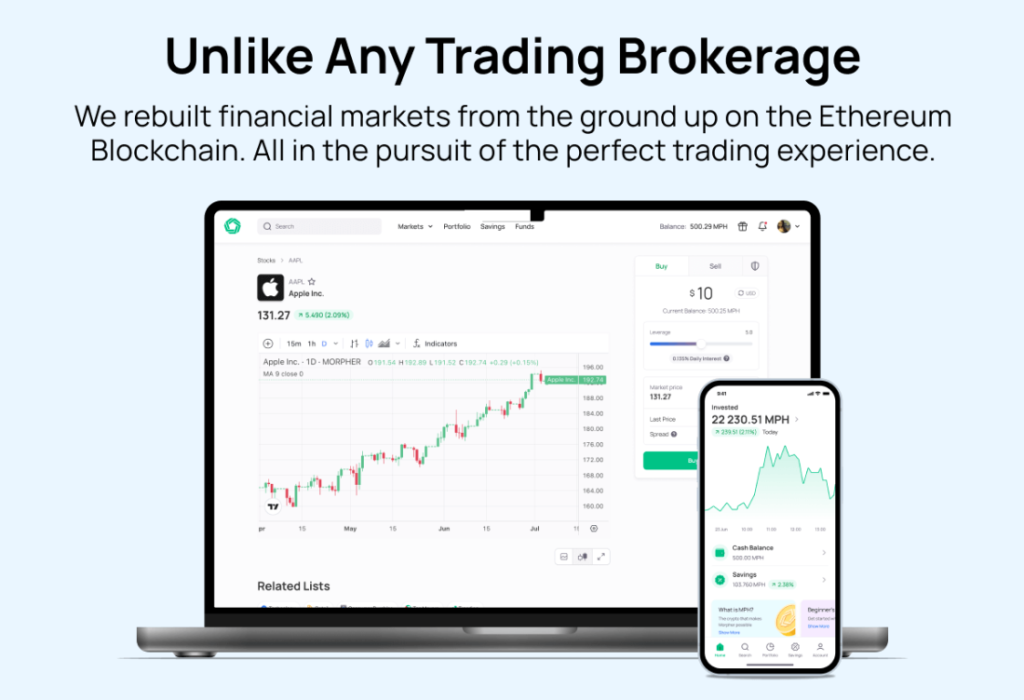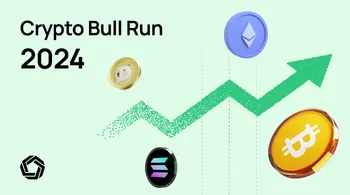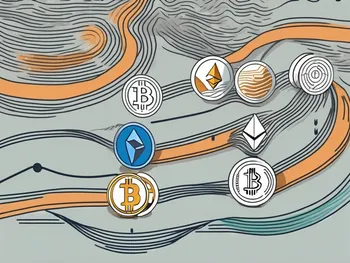Crypto Staking: The Ultimate Guide for All Your Questions

I have been involved in the world of cryptocurrency for years now, and one topic that has always fascinated me is crypto staking. In this ultimate guide, I will walk you through everything you need to know about crypto staking – from the basics to the future trends. So, let’s dive in!
Understanding the Basics of Crypto Staking
Before we delve into the details, let’s start with the fundamentals of crypto staking. Crypto staking is the process of participating in a proof-of-stake (PoS) blockchain network by holding and “staking” a certain amount of cryptocurrency. In return, stakers are rewarded with more cryptocurrency.
This brings us to the question – what is crypto staking? Simply put, it is a way to earn passive income with your cryptocurrency holdings. Instead of relying on mining, which requires significant computational power and energy consumption, staking allows you to contribute to the network’s security and consensus algorithm by locking up your coins in a wallet.
What is Crypto Staking?
Crypto staking is a process where you lock up a certain amount of cryptocurrency in a wallet to participate in the validation of transactions on a blockchain network. By doing so, you contribute to the security and integrity of the network and, in return, receive rewards proportionate to your stake.
The Role of Crypto Staking in Blockchain Networks
Crypto staking plays a vital role in ensuring the smooth functioning of blockchain networks. It helps maintain network security and decentralization by incentivizing participants to hold and stake their tokens. By staking their coins, individuals become validators in the network, verifying and validating transactions. This process maintains consensus and prevents malicious actors from manipulating the network.
Different Types of Crypto Staking
There are various types of crypto staking, each with its own unique features. Some popular types include delegated proof-of-stake (DPoS), masternode staking, and Ethereum 2.0 staking. Each type has its own set of requirements, rewards, and responsibilities, so it’s important to understand which type suits your needs and goals.
The Benefits and Risks of Crypto Staking
Now that we understand the basics, let’s explore the benefits and risks of crypto staking. Like any investment strategy, crypto staking has its pros and cons. Let’s start with the advantages.
Advantages of Crypto Staking
One of the main advantages of crypto staking is the potential for passive income. By staking your coins, you can earn additional cryptocurrency as a reward. This allows you to grow your wealth without actively trading or mining.
Additionally, staking helps to secure the network. As a validator, you play an essential role in maintaining the integrity of the blockchain. By participating in staking, you contribute to the decentralization and security of the network, making it more robust and resilient against attacks.
Furthermore, staked cryptocurrencies often come with voting rights. This means that you have a say in the governance and decision-making processes of the blockchain network. Your stake gives you the power to influence network upgrades and improvements.
Potential Risks and How to Mitigate Them
While there are significant benefits to crypto staking, it’s crucial to be aware of the potential risks involved. One of the main risks is the volatility of cryptocurrency prices. The value of your staked coins can fluctuate, resulting in potential losses if the market takes a downturn.
To mitigate this risk, it’s essential to diversify your staking portfolio. Instead of putting all your eggs in one basket, consider staking multiple cryptocurrencies with different risk profiles. This way, even if one coin’s value drops, you have others that can potentially offset the loss.
Additionally, stay updated with the latest news and developments in the crypto space. This will help you make informed decisions and adjust your staking strategy accordingly. Always do your own research before staking any cryptocurrency.
How to Start Staking Cryptocurrencies
Now that we understand the benefits and risks, let’s explore how to start staking cryptocurrencies. Here are the steps to get you started on your staking journey.
Choosing the Right Cryptocurrency for Staking
The first step is to choose the right cryptocurrency for staking. Consider factors such as the project’s credibility, the rewards offered, and the staking requirements. Look for projects with a strong development team, a clear roadmap, and a track record of delivering on their promises.
Furthermore, evaluate the staking rewards and the projected returns. Some cryptocurrencies offer higher rewards for staking, while others may have different distribution models. Make sure to understand how the rewards are calculated and distributed.
Steps to Start Staking
Once you have chosen the cryptocurrency to stake, follow these steps to start staking:
- Set up a wallet: Choose a wallet that supports staking for the specific cryptocurrency you want to stake. Ensure that the wallet is secure and reputable.
- Acquire the cryptocurrency: Purchase the cryptocurrency from a reputable exchange.
- Transfer the cryptocurrency to your wallet: Send the acquired cryptocurrency to your staking wallet.
- Lock up your coins: Follow the staking instructions provided by the cryptocurrency project to lock up your coins in the staking wallet.
- Start earning rewards: Once your coins are staked, you will start earning rewards based on the project’s staking rules and distribution model.
Tools and Platforms for Crypto Staking
There are various tools and platforms available to simplify the staking process. Some popular options include Staked, Celsius Network, and Trust Wallet. These platforms provide user-friendly interfaces, secure storage, and additional features such as automatic restaking to maximize your rewards.
Be sure to research and choose a platform that aligns with your needs and preferences. Consider factors such as security, reputation, user interface, and additional features offered.
Crypto Staking vs Other Investment Strategies
As crypto staking gains popularity, it’s natural to compare it with other investment strategies within the cryptocurrency space. Let’s take a brief look at how it stacks up against mining and trading.
Comparing Crypto Staking and Mining
Both crypto staking and mining are ways to earn cryptocurrency rewards, but they differ in various aspects. Mining requires significant computational power and expensive hardware, making it less accessible for casual participants. On the other hand, staking allows for a more energy-efficient and accessible approach to earning rewards.
Furthermore, mining is often associated with high electricity costs and requires technical expertise to set up and maintain the mining equipment. Staking, on the other hand, can be easily done by holding and staking your coins in a wallet.
Crypto Staking vs Trading: Which is Better?
Trading and staking are different approaches to cryptocurrency investment, each with its own set of advantages and risks. Trading requires active participation and market analysis, where profits are dependent on buying low and selling high. It demands time, effort, and a deep understanding of market trends.
Staking, on the other hand, offers a passive investment strategy with the potential for long-term rewards. It requires less active involvement and provides a predictable stream of income. Staking can be particularly attractive for individuals who believe in the long-term prospects of a specific project and want to earn rewards while holding their coins.
Future of Crypto Staking
As the crypto ecosystem continues to evolve, the future of staking looks promising. Let’s explore some of the trends shaping the crypto staking landscape.
Trends Shaping the Crypto Staking Landscape
One significant trend is the emergence of decentralized finance (DeFi) platforms. DeFi has gained traction in recent years, and staking plays a vital role in these platforms. Staking allows individuals to lock up their tokens as collateral for borrowing and lending, contributing to the liquidity and stability of these platforms.
Another trend is the transition from proof-of-work (PoW) to proof-of-stake (PoS) consensus algorithms. Ethereum, the second-largest cryptocurrency by market capitalization, is in the process of transitioning to Ethereum 2.0, a PoS-based network. This transition will significantly impact the staking ecosystem, opening up new opportunities for stakers and validators.
The Role of Crypto Staking in Decentralized Finance (DeFi)
Decentralized finance (DeFi) is revolutionizing the traditional financial landscape, and staking plays a crucial role in this transformation. DeFi platforms leverage staking to secure their networks, incentivize participation, and enable the borrowing and lending of digital assets.
Staking in DeFi not only allows users to earn rewards but also unlocks various financial services such as yield farming, liquidity provision, and governance participation. It empowers individuals to take control of their finances and participate in a decentralized and transparent financial ecosystem.
Throughout my journey in the cryptocurrency world, I have personally experienced the rewards and potential of crypto staking. It has allowed me to passively earn income while contributing to the growth and security of blockchain networks. Staking has become an integral part of my overall investment strategy, and I highly recommend exploring this avenue of cryptocurrency ownership.
FAQ
1. What is crypto staking?
Crypto staking is the process of holding and “staking” a certain amount of cryptocurrency in a wallet to participate in the validation of transactions on a blockchain network. Stakers are rewarded with more cryptocurrency for their contribution.
2. How does crypto staking contribute to network security?
By staking their tokens, individuals become validators in the network, verifying and validating transactions. This process maintains consensus and prevents malicious actors from manipulating the network.
3. What are the advantages of crypto staking?
Crypto staking offers passive income potential, network security contributions, and voting rights in governance processes. It allows you to grow your wealth without actively trading or mining.
4. What are the risks of crypto staking?
The main risk of crypto staking is the volatility of cryptocurrency prices, which can result in potential losses if the market takes a downturn. Diversification and staying informed are key to mitigating this risk.
5. How do I start staking cryptocurrencies?
To start staking cryptocurrencies, choose the right cryptocurrency for staking, set up a wallet that supports staking, acquire the cryptocurrency, transfer it to your staking wallet, lock up your coins following the staking instructions, and start earning rewards.
6. Are there any tools or platforms to simplify the staking process?
Yes, there are various tools and platforms available that provide user-friendly interfaces, secure storage, and additional features to simplify the staking process. Some popular options include Staked, Celsius Network, and Trust Wallet.
7. How does crypto staking compare to other investment strategies like mining and trading?
Mining requires significant computational power and expensive hardware, while staking allows for a more accessible and energy-efficient approach to earning rewards. Trading requires active participation and analysis, while staking offers a passive investment strategy with a predictable stream of income.
8. What is the future of crypto staking?
The future of crypto staking looks promising, with trends such as the emergence of decentralized finance (DeFi) platforms and the transition from proof-of-work (PoW) to proof-of-stake (PoS) consensus algorithms. Staking plays a crucial role in DeFi and is set to evolve further as more projects adopt PoS frameworks.
9. How does crypto staking contribute to decentralized finance (DeFi)?
Staking in DeFi allows users to earn rewards and unlocks various financial services such as yield farming, liquidity provision, and governance participation. It empowers individuals to take control of their finances and participate in a decentralized and transparent financial ecosystem.
10. Should I consider crypto staking as part of my investment strategy?
Crypto staking can be a valuable addition to an investment strategy, providing passive income potential and a way to contribute to blockchain network security. However, it’s essential to do thorough research and consider your risk tolerance and investment goals before making any decisions.
With this ultimate guide, you now have a comprehensive understanding of crypto staking – from the basics to the future trends. Whether you are a beginner or an experienced investor, crypto staking offers a unique and rewarding way to grow your cryptocurrency portfolio. Happy staking!
Ready to take your crypto staking to the next level? Discover the innovative world of Morpher, where you can seamlessly integrate staking into a broader investment strategy. With Morpher’s zero fees, infinite liquidity, and unique trading experience, you’re empowered to trade across a multitude of asset classes beyond just cryptocurrencies. Embrace the future of investing with fractional shares, short selling, and up to 10x leverage to amplify your trades. Your journey towards a more flexible and rewarding investment portfolio begins here. Sign Up and Get Your Free Sign Up Bonus today, and join the Morpher community in transforming the landscape of trading.

Disclaimer: All investments involve risk, and the past performance of a security, industry, sector, market, financial product, trading strategy, or individual’s trading does not guarantee future results or returns. Investors are fully responsible for any investment decisions they make. Such decisions should be based solely on an evaluation of their financial circumstances, investment objectives, risk tolerance, and liquidity needs. This post does not constitute investment advice.

Painless trading for everyone
Hundreds of markets all in one place - Apple, Bitcoin, Gold, Watches, NFTs, Sneakers and so much more.

Painless trading for everyone
Hundreds of markets all in one place - Apple, Bitcoin, Gold, Watches, NFTs, Sneakers and so much more.









